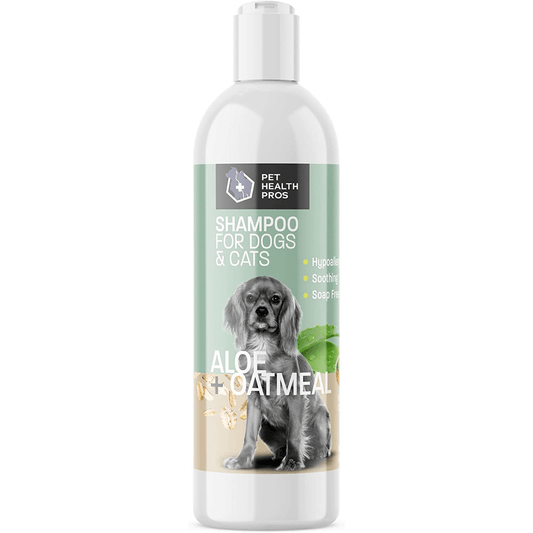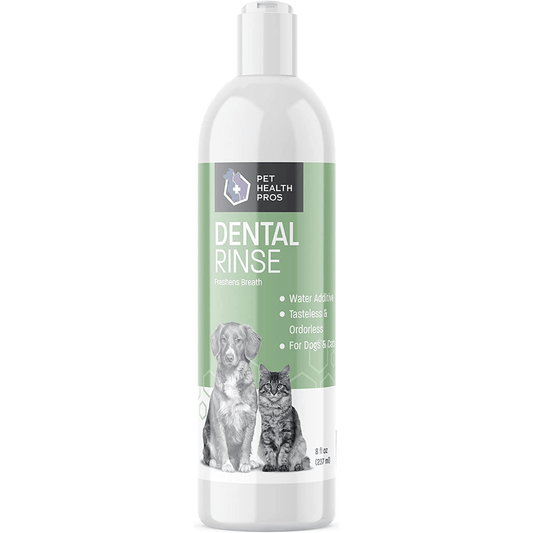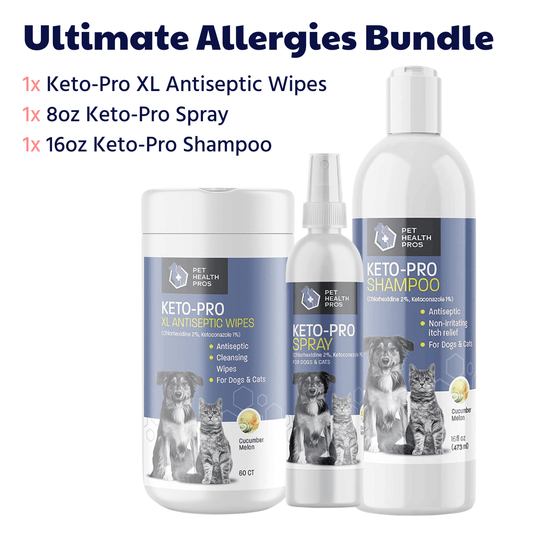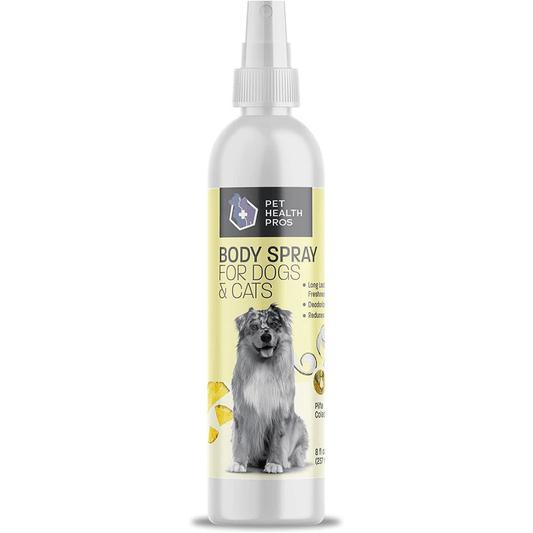Creating a homemade anti-fungal spray for dogs can be a simple and effective way to help your furry friend combat fungal infections. With a few natural ingredients, you can whip up a solution that not only soothes their skin but also promotes healing. This guide will walk you through the process step-by-step, ensuring your dog gets the care they deserve without the harsh chemicals found in commercial products.
Key Takeaways
- Fungal infections in dogs can be common and may require attention.
- Natural ingredients like apple cider vinegar and coconut oil can be effective in homemade sprays.
- Mixing the spray is easy; just follow the step-by-step instructions provided.
- Regular application is key, but always monitor your dog for any adverse reactions.
- If symptoms persist, consult with a veterinarian for professional advice.
Understanding Fungal Infections In Dogs
Common Types of Fungal Infections
Okay, so fungal infections in dogs? They're actually pretty common. You've probably heard of some of them. Ringworm is a big one, even though it's actually a fungus, not a worm. Then there's yeast infections, which can pop up in their ears or on their skin. And sometimes, you get the less common but more serious ones like blastomycosis, which can affect their whole body. It's a bit of a minefield, honestly.
Symptoms to Watch For
Spotting a fungal infection early can save your dog a lot of discomfort. Keep an eye out for things like excessive scratching, licking, or chewing at their skin. You might also notice hair loss, especially in circular patches (hello, ringworm!). Redness, inflammation, and scaly or crusty skin are other telltale signs. And don't forget about the ears – frequent head shaking or discharge could mean a yeast infection is brewing.
Here's a quick rundown:
- Persistent scratching
- Hair loss (circular patches)
- Red, inflamed skin
- Ear discharge or head shaking
When to Consult a Veterinarian
Alright, so you've noticed some weird stuff on your dog's skin. When do you actually need to call the vet? Well, if the symptoms are severe, like if your dog is constantly scratching and making themselves bleed, definitely call. If the symptoms don't improve after a few days of home treatment, it's time to get professional help. And if your dog seems generally unwell – lethargic, not eating, feverish – don't wait. It could be something more serious than just a simple fungal infection.
Look, I'm not a vet, and this isn't medical advice. If you're worried about your dog, always talk to a professional. They can properly diagnose the problem and recommend the best course of action. Better safe than sorry, right?
Essential Ingredients For Your Spray
Natural Anti-Fungal Agents
When you're gathering stuff, you want ingredients that kill fungus and are safe for your pup. These simple ingredients create a powerful, gentle spray for your dog's skin. Here's what goes into your mix:
| Ingredient | Key Component | Measurement |
|---|---|---|
| Apple Cider Vinegar | Acetic acid | 2 tbsp |
| Coconut Oil | Lauric acid | 1 tbsp |
| Tea Tree Oil | Terpinen-4-ol | 5 drops |
| Neem Oil | Nimbin | 1 tbsp |
| Aloe Vera Gel | Polysaccharides | 2 tbsp |
- Apple cider vinegar helps balance the natural pH of skin.
- Coconut oil locks in moisture and fights off microbes.
- Tea tree oil offers strong, natural anti-fungal action.
- Neem oil has gentle antiseptic properties.
- Aloe vera soothes red, itchy patches.
Benefits of Each Ingredient
Each oil or extract has its own perks. Mix them right, and they support each other.
- Apple cider vinegar lowers pH, making it harder for fungus to grow.
- Coconut oil boosts skin hydration and adds a barrier against spores.
- Tea tree oil breaks down fungal cells on contact.
- Neem oil calms inflammation and cuts down on itchiness.
- Aloe vera speeds up healing and cuts down redness.
When you combine these, you’re not just stopping fungus—you’re helping skin heal and stay healthy.
Where to Source Ingredients
Most of these items are easy to find in stores or markets near you. Aim for pure, unrefined versions to get the full effect.
- Health food shops often carry raw coconut oil and aloe vera gel.
- Grocery stores stock apple cider vinegar and neem oil in the natural aisle.
- Farmers’ markets can be great for fresh aloe or small-batch oils.
- Pet supply outlets may have ready-to-use neem and tea tree blends.
- Online sellers offer bulk options if you plan to make several batches.
Check labels. You want minimal additives. Higher quality means better results, and that’s worth a quick extra minute at the checkout.
Step-By-Step Guide To Making The Spray
Gathering Your Supplies
Okay, so you're ready to make the anti-fungal spray. First, you gotta get everything together. It's like when I'm baking – if I don't have all the stuff ready, I end up running around like crazy. For this spray, you'll need:
- Your natural anti-fungal ingredients (like apple cider vinegar, coconut oil, or tea tree oil).
- A clean spray bottle. I usually grab one from the dollar store, but make sure it's never had anything toxic in it.
- Distilled water. Tap water can have stuff in it that you don't want on your dog's skin.
- A measuring cup and spoons. Gotta get those ratios right!
I like to lay everything out on the counter before I start. That way, I know I have everything and I'm not scrambling at the last minute. Plus, it just makes the whole process smoother.
Mixing Instructions
Alright, now for the fun part – mixing! This is where you turn those individual ingredients into a fungus-fighting machine. Here's a basic recipe to get you started, but feel free to tweak it based on what you've got and what your vet says:
- Start with 1 cup of distilled water in your measuring cup.
- Add 1 tablespoon of apple cider vinegar. Don't go overboard – ACV is strong stuff!
- Melt 1 teaspoon of coconut oil (if it's solid) and add it to the mix. Coconut oil can get clumpy if it's cold, so melting it helps it mix in better.
- If you're using tea tree oil, add 5-10 drops. Remember, tea tree oil is potent, so less is more.
- Pour everything into your spray bottle, close it tight, and shake it like you mean it! You want to make sure everything is mixed up really well.
Storage Tips
So, you've made your spray – awesome! Now, how do you keep it from going bad? Here are a few tips:
- Store the spray in a cool, dark place. Sunlight and heat can mess with the ingredients.
- Keep it in the fridge for longer shelf life.
- Label the bottle with the date you made it. That way, you know how old it is.
- I usually make a fresh batch every couple of weeks. Homemade stuff doesn't last forever, you know?
How To Apply The Spray Effectively
Best Practices for Application
Okay, so you've made your anti-fungal spray, great! Now, let's talk about how to actually use it. First off, make sure the area you're treating is relatively clean. I usually give the affected spot a quick wipe with a damp cloth to get rid of any loose dirt or debris. You want the spray to actually reach the skin, not just sit on top of a layer of grime.
Next, when you spray, don't go overboard. A light, even coating is all you need. Hold the bottle a few inches away and give it a good spritz. If your dog has long fur, you might need to gently part the hair so the spray gets down to the skin. And, of course, avoid spraying near their eyes, nose, or mouth. Nobody wants a face full of vinegar, right?
Frequency of Use
How often should you be using this spray? Well, it depends on the severity of the infection. For mild cases, once or twice a day might be enough. If it's a bit more stubborn, you could go up to three times a day. Just keep an eye on your dog's skin. If you notice any irritation or dryness, cut back on the frequency.
Here's a general guideline:
| Severity | Frequency | Notes |
|---|---|---|
| Mild | 1-2 times daily | Monitor for improvement |
| Moderate | 2-3 times daily | Watch for irritation |
| Severe | Consult vet | Use spray as adjunct therapy |
Precautions to Take
Alright, safety first! Even though this is a homemade spray, it's still important to be careful. Before you start spraying away, do a little patch test. Apply a small amount to an unaffected area of your dog's skin and wait 24 hours to see if there's any reaction. If everything looks good, you're in the clear.
Also, remember that this spray is meant to be a supportive treatment, not a cure-all. If your dog's fungal infection is severe or doesn't seem to be improving, it's time to call the vet. They can give you a proper diagnosis and recommend the best course of action. And, as always, keep the spray out of reach of children and pets when you're not using it.
Maintaining Your Dog's Skin Health
Regular Grooming Tips
Keeping up with a regular grooming routine is super important for your dog's skin health. It's not just about making them look good; it's about preventing problems before they start. Here's what I try to do:
- Brush your dog regularly. This helps remove loose fur, dirt, and dander, which can clog pores and cause irritation. The type of brush you use will depend on your dog's coat type. I use a slicker brush for my long-haired pup.
- Bathe your dog only when necessary. Over-bathing can strip their skin of natural oils, leading to dryness and irritation. When you do bathe them, use a gentle, dog-specific shampoo.
- Check for parasites regularly. Fleas, ticks, and mites can cause intense itching and skin problems. I check my dog after every walk, especially in wooded areas.
Dietary Considerations
What your dog eats plays a big role in their skin health. A balanced diet rich in essential fatty acids, vitamins, and minerals can help keep their skin healthy and their coat shiny.
- Make sure your dog's food is high-quality and appropriate for their age, breed, and activity level. Look for foods that list real meat as the first ingredient.
- Consider adding supplements to their diet. Omega-3 and omega-6 fatty acids can help reduce inflammation and improve skin health. I add a fish oil supplement to my dog's food.
- Avoid foods that your dog is allergic to. Food allergies can cause skin problems like itching, redness, and hair loss. If you suspect your dog has a food allergy, talk to your vet about doing an elimination diet.
Signs of Improvement
After starting a new treatment or routine, it's important to watch for signs that your dog's skin is improving. Here's what I look for:
- Reduced itching and scratching. This is usually the first sign that things are getting better.
- Less redness and inflammation. The skin should start to look less irritated.
- Hair regrowth in affected areas. This can take time, but you should eventually see new hair growth.
- Improved coat quality. The coat should look shinier and healthier.
If you're not seeing any improvement after a few weeks, or if your dog's condition is getting worse, it's time to talk to your vet. They can help you figure out what's going on and recommend the best course of treatment.
Alternative Remedies For Fungal Infections
While our homemade spray can be a great help, it's good to know about other options for tackling those pesky fungal infections in your dog. Sometimes, you need a little extra help, or maybe you're looking for something different. Let's explore some alternatives.
Home Remedies to Consider
Okay, so you've tried the spray, but what else can you do from home? There are a few things you might already have in your pantry that can offer some relief. Remember, though, these are generally for milder cases or to support other treatments. If things look serious, definitely see a vet!
- Apple Cider Vinegar (ACV): Diluted ACV can be used as a rinse. The acidity can help inhibit fungal growth. Mix equal parts ACV and water, and apply to the affected area. Don't use it on open wounds, though!
- Yogurt: Plain, unsweetened yogurt contains probiotics that can help balance the skin's flora. Apply a thin layer to the affected area. Make sure your dog doesn't lick it off immediately!
- Coconut Oil: This has antifungal properties and can soothe irritated skin. Apply a thin layer to the affected area. It's also safe if your dog licks it, but don't let them ingest too much.
It's important to remember that home remedies aren't a substitute for veterinary care, especially if the infection is severe or doesn't improve. Always monitor your dog closely for any adverse reactions, and discontinue use if you notice any irritation or worsening of symptoms.
When to Use Professional Treatments
Sometimes, home remedies just aren't enough. If you see any of these signs, it's time to call the vet:
- The infection is spreading or getting worse.
- Your dog is in pain or discomfort.
- There are open sores or lesions.
- The infection is affecting a large area of the body.
- Your dog has other health problems.
Your vet might prescribe antifungal medications, either topical or oral. They might also recommend medicated shampoos or dips. These treatments are often stronger and more effective than home remedies, especially for stubborn or severe infections. Don't hesitate to seek professional help; it's always better to be safe than sorry when it comes to your dog's health. If your dog has a severe infection, you may need to consider prescription antifungal medications.
Integrating Natural and Conventional Care
So, can you use both natural remedies and conventional treatments together? Absolutely! In fact, sometimes a combination approach works best. Talk to your vet about whether it's okay to use home remedies alongside any medications they prescribe. For example, you might use a medicated shampoo as directed by your vet, and then apply coconut oil to soothe the skin afterward. Just make sure everything is compatible and won't cause any adverse reactions. It's all about finding what works best for your dog while keeping them safe and comfortable.
Safety Considerations When Using Homemade Sprays
Potential Allergic Reactions
When you're trying out a new homemade spray on your dog, it's super important to watch for any signs of an allergic reaction. Even natural ingredients can sometimes cause problems. Keep an eye out for things like:
- Excessive scratching or biting
- Redness or swelling of the skin
- Hives or a rash
- Difficulty breathing (rare, but serious)
If you notice any of these symptoms, stop using the spray right away and give your vet a call. It's always better to be safe than sorry!
Avoiding Toxic Ingredients
Not everything that's safe for humans is safe for dogs. Some essential oils, for example, can be toxic to them. Always do your homework before adding anything to your homemade spray. Here are some ingredients to steer clear of:
- Tea tree oil (in high concentrations)
- Pennyroyal
- Wintergreen
- Garlic (in large amounts)
It's a good idea to double-check any ingredient you're unsure about with a reliable source, like your veterinarian or a reputable online database. This can help you avoid accidentally using something that could harm your furry friend.
Consulting Your Vet Before Use
Before you start using any homemade anti-fungal spray, have a chat with your vet. They can give you the thumbs up (or down) based on your dog's specific health needs. Plus, they can help you figure out if a homemade spray is even the right solution for your dog's fungal infection. Sometimes, a vet-prescribed treatment is the best way to go. Think of it as getting a second opinion from someone who knows your dog's health history inside and out.
When making your own sprays, safety is super important. Always wear gloves and a mask to protect your skin and lungs from any harmful ingredients. Make sure to keep your sprays away from kids and pets, and store them in a safe place. If you want to learn more about how to use homemade sprays safely, check out our website for tips and tricks!
Final Thoughts
Making your own anti-fungal spray for your dog can be a simple and effective way to help keep them healthy. By using natural ingredients, you can avoid harsh chemicals that might irritate their skin. Remember to test the spray on a small area first to ensure your dog doesn’t have any adverse reactions. If your dog has a persistent issue or if you’re unsure about anything, it’s always best to consult your vet. With a little effort, you can create a safe and helpful solution for your furry friend.
Frequently Asked Questions
What are common fungal infections in dogs?
Some common fungal infections in dogs include ringworm, yeast infections, and aspergillosis.
How can I tell if my dog has a fungal infection?
Look for symptoms like itching, redness, hair loss, or unusual odors coming from their skin.
When should I take my dog to the vet for a fungal infection?
If your dog shows signs of a fungal infection that don't improve or worsen, it's best to consult a veterinarian.
What ingredients do I need to make a homemade anti-fungal spray?
You will need natural antifungal agents like apple cider vinegar, coconut oil, and water.
How often can I apply the spray to my dog?
You can apply the spray once or twice daily, depending on the severity of the infection.
Are there any risks when using homemade sprays on dogs?
Yes, some dogs may have allergic reactions. Always test a small area first and consult your vet if unsure.








